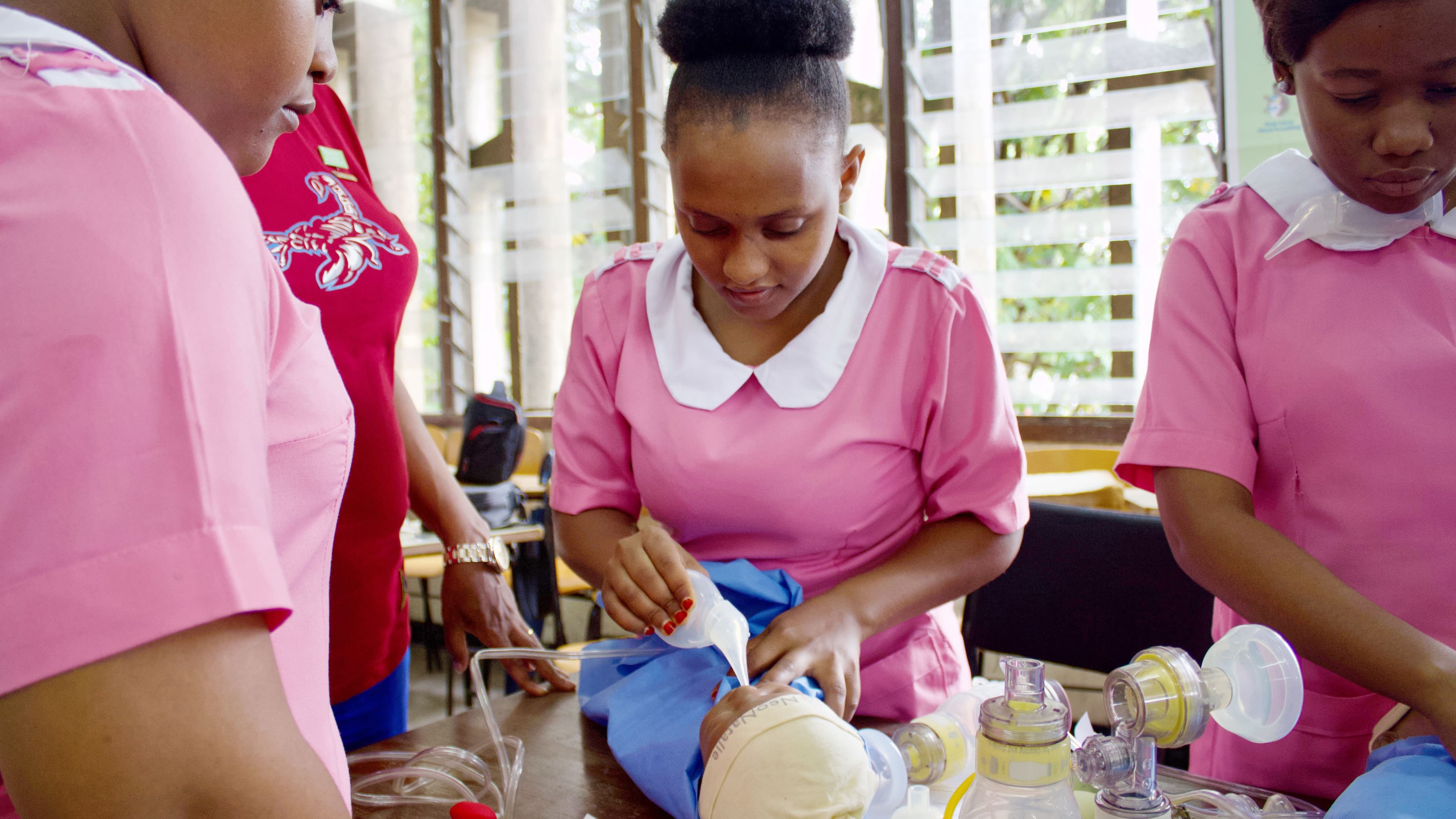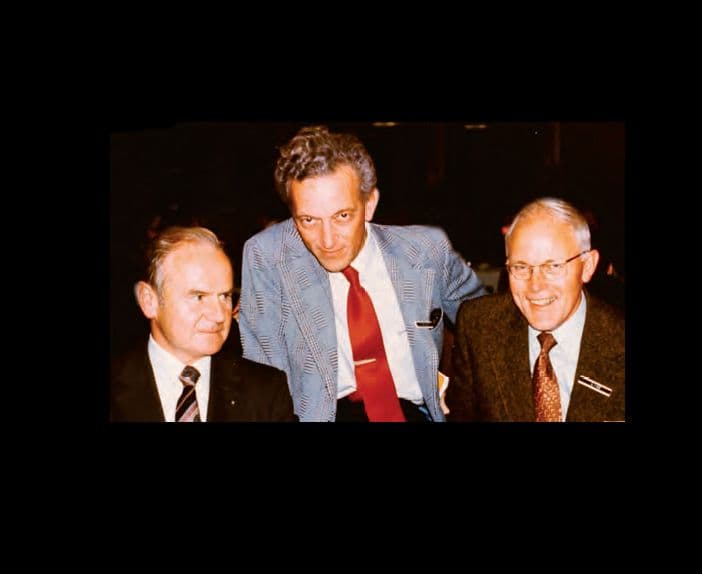Our story
A legacy of innovation
Right from the day in 1940 when Åsmund S. Lærdal founded his company in Stavanger, Norway, he applied his firm basic principles which already then encompassed the concept of stakeholders and teamwork. One major stakeholder was clearly defined: the child. Producing high-quality books and toys for children meant providing joy. During WWII, raw materials could be impossible to find. Under cover of the dark nights he travelled illegally along the fjords to buy wood for toys. He and his team kept developing and improving a richness of new varieties – always with an eye on stimulating the child’s active involvement and imagination.
Soon after the war, he travelled to the USA to search for new materials and found the basics for soft plastic. After intensive experiments and work to develop pioneering processes and machines, the company rapidly became one of the European leaders in quality dolls and indestructible model cars. The Anne dolls – in ever new but always beautiful versions – were soft and cuddly; the cars were so precisely modelled that collecting them became a dream for boys as far away as Hong Kong.


The Tomte toy cars introduced in the mid 1950s were exported to over 110 countries. (Photo from the Norwegian Childhood Museum in Stavanger). About one million Anne dolls were made in the 1950s in a hundred different models. Today they are collectors’ items.
Moving into life saving
Transitioning into life saving was a natural progression for Laerdal, sparked by an unexpected request from the Norwegian Civil Defence. With expertise in soft plastics, the company was approached to develop imitation wounds for training purposes. Åsmund, recognizing the opportunity, reached out to the emergency department of the University Hospital in Oslo. After gaining approval, he installed a camera to capture the intricate details needed for the project.
Collaborating closely with an experienced surgeon, Laerdal meticulously crafted accurate models of relevant wounds. The process was meticulous and thorough, ensuring that the resulting Practoplast kits contained 33 different wound imitations, each incredibly lifelike. As word of their effectiveness spread, the kits were adopted on several continents, marking a significant step forward in Laerdal's journey toward life-saving solutions.

When Åsmund saved his son
When the two older siblings, Astrid and Åge, called out to their parents that their little brother had fallen into the water, Åsmund S. Lærdal reacted instinctively. Thanks to the air inside his rain-suit, two-year old Tore was floating but face down, unconscious and icy cold. Having held him upside-down and shaken him to drain out the water and help him breathe, Åsmund ran uphill to bring him into the cottage, stripped himself and Tore, and lay down in the bed cuddling him to warm him up. Åsmund and his wife, Margit, had previously lost their first child, Signe Marie, in a neonatal hospital epidemic. The near drowning of Tore on top of this tragedy was all the more traumatic to them and contributed to Åsmund’s personal and unspoken motivation for what he later devoted his life to.

New concept
The trained bystander
In 1961, Åsmund S. Lærdal sponsored the first international symposium on emergency resuscitation in Stavanger, concluding that everyone, including school children, should be taught mouth-to-mouth resuscitation. He emphasized: “Implement what works and drive therapy through education.”
At first, chest compressions were considered too risky for laypeople, reserved for health professionals. However, by 1967, it was recommended that all health personnel learn full CPR. Seven years later, the American Heart Association advocated for laypeople to train in chest compressions, recognizing the life-saving benefits.
At the 50th anniversary of modern life saving in 2010, the AHA estimated that about 350 million people around the world had been trained in CPR, most of them on Resusci Anne. CPR was recognized as one of the most important public health initiatives in the last two generations and is now estimated to have contributed to saving at least 2 million lives.
The story of the facemask
Girl from the River Seine
In the 1950s, a person who did not breathe was considered dead. One important question was the face of the manikin: ”How could it appear dead and yet not be too scary to breathe into?” Åsmund always immersed himself in a problem, thinking and discussing with his nearest collaborators and thinking again. In this case he found the answer in a face mask in the home of his parents-in-law. In the late 1800s, a Paris modeller of death masks had been so struck by the serene expression of a beautiful young woman who was found drowned in the River Seine that he made a cast for what was to become a bestseller: the enigmatic “L’Inconnue”, the unknown.
Åsmund commissioned the Danish sculptor, Emma Mathiassen, who had shaped the face of the Anne dolls, to create a face for Resusci Anne based on this mask. In this way, “L’Inconnue” has played her part in helping save millions of lives around the world and continues to help convince learners that they are able and willing to act when a life is at stake. The face of death became the face of life.


The vision of helping low-income countries
Even before starting his own company, Åsmund S. Lærdal had told his wife-to-be, Margit, of his dream to make so much money that he could afford to give away half. All along, he had provided direct financial support to the mission of helping saving lives, mostly behind the scenes.
In 1980, he finalised his plans for the Laerdal Foundation for Acute Medicine and provided it with a starting capital of NOK 10 million ($1.1m). Over the years, this foundation has supported close to 2,000 research projects, in recent years with annual grants totalling up to NOK 40 million.
Also, Åsmund thought about handing over the company – his son Tore had joined Laerdal in 1975 after graduating – and devoting his own energies to help low-income countries, in the sense of helping people to help themselves. As he expressed it: “Equipping the people not with tractors but with better spades.”
However, Åsmund S. Lærdal became seriously ill and died in November 1981 before the Foundation’s first award ceremony. Tore was not yet 30, but with the mission in his blood he shouldered the full responsibility for running the company. 30 years later, he realised his father’s vision by establishing Laerdal Global Health.
Promoting mass CPR training
In 1982, the Laerdal Foundation helped initiate and support an international conference for CPR trainers in London, where the AHA presented their support programs for basic and advanced life support. This example from the US stimulated health authorities, schools, rescue organisations and Laerdal to collaborate on projects for mass CPR training in the Stavanger region of Norway.
These demonstrated that a two-hour course sufficed to train trainers, and successful training of 5,000 lay persons over just two weekends pointed to great potential.
Inspired by these experiences, Stig Holmberg in Gothenburg developed a Swedish CPR training model, primarily aimed at healthcare personnel. Laerdal contributed with a training program and sponsored thousands of large posters for hospitals and health institutions: complex algorithms were given a simple-to-grasp expression, making them easy to learn. These posters proved so popular that special editions were added, for rescuing children and infants. Over the years, posters in many languages were printed for the European Resuscitation Council for displaying in thousands of hospital emergency rooms and training sites. In addition, pocket-size versions were supplied for use as personal reminders.

The Recording Resusci Anne provided feedback, printing out an accurate recording of ventilation and compression quality.
Moving into high-technology patient simulators
By the mid-80s Laerdal’s internationalization had progressed rapidly. Whereas the number of employees in Stavanger remained at about 350, sales companies in eight countries had increased the total employed to about 600. US experiences drew Laerdal’s attention to the value of early defibrillation as well as CPR to improve survival from cardiac arrest.


Recognising errors - and learning from them
In the ‘90s, John Schaefer and René Gonzalez in Pittsburgh tinkered to equip an extremely costly and rare simulator – which was reserved for research only – with crucial airway functions.
Medical Plastics Laboratory (MPL) in Texas acquired exclusive rights to use their subsequent patent in its manikins, at a time when MPL and Laerdal were discussing a joint venture to update Resusci Anne.
Laerdal acquired MPL around 2000 – the year after the Institute of Medicine in the US had presented its landmark report “To Err is Human”, estimating that up to 100,000 lives were lost every year due to medical errors in the US alone. The report listed its arguments for patient simulation training: optimally efficient learning method; realistic preparation for rare, difficult cases; and allowing errors to be made without harm to patients, analysing them, and repeating the team’s efforts in order to improve.
Photo: The first SimMan, launched in 2002.
From SimMan to Nursing Anne Simulator
This triggered the development of SimMan by combining MPL’s airway torso trainer with the Laerdal HeartSim rhythm simulator. The result cost a fraction of previous simulators and was eminently suited for both training and research, causing a true disruption – a revolution not only in the training itself, but in the culture by admitting errors, making it natural and positive to discuss them in constructive ways and improve procedure, and working to avoid errors. It was an instant hit: simulation centres were set up on several continents based around SimMan.
Over the years, constant collaboration on further developments yielded a range of programs and products, among them the Nursing Anne Simulator. Both the scope of the nursing role and the requirements for training nurses and nursing students have changed dramatically. Practising core skills with the different modules of Nursing Anne enhances clinical knowledge, allows trainees to experience highly realistic patient encounters and in these ways prepare them for the highest level of care.

The contrast
MiniAnne for mass CPR training
Around the same time Laerdal was developing high-end patient simulators, the AHA challenged the company to help create a simplified, low-cost, 30-minute CPR program for laypeople, compared to traditional courses lasting two to four hours. Despite efforts, the number of bystanders willing to act was still low. The training materials needed to be affordable, costing less than $30.
The outcome was the Mini Anne kit, an effective training tool launched by the AHA in 2005 as CPR Anytime. In Denmark, the Tryg Foundation offered a Mini Anne kit to every 13-year-old, emphasizing the importance of training the young. Allowing them to keep the kits helped them teach their new skills to older family members, who are most at risk of cardiac arrest at home.
Photo: 13-year old Hanne Haug, in Våland School, Stavanger, training to become a life saver.

A new opening: Laerdal Global Health
In 2006, the Norwegian anaesthetist, Mads Gilbert, drew Tore Lærdal’s attention to the area which now accounts for the largest share of the Million Lives goal: maternal and newborn deaths.
The American Academy of Pediatrics (AAP) believed that the key was educational methodology that increased both competence and confidence, and they partnered with Laerdal to help advance educational science and resources needed for training in neonatal resuscitation.


